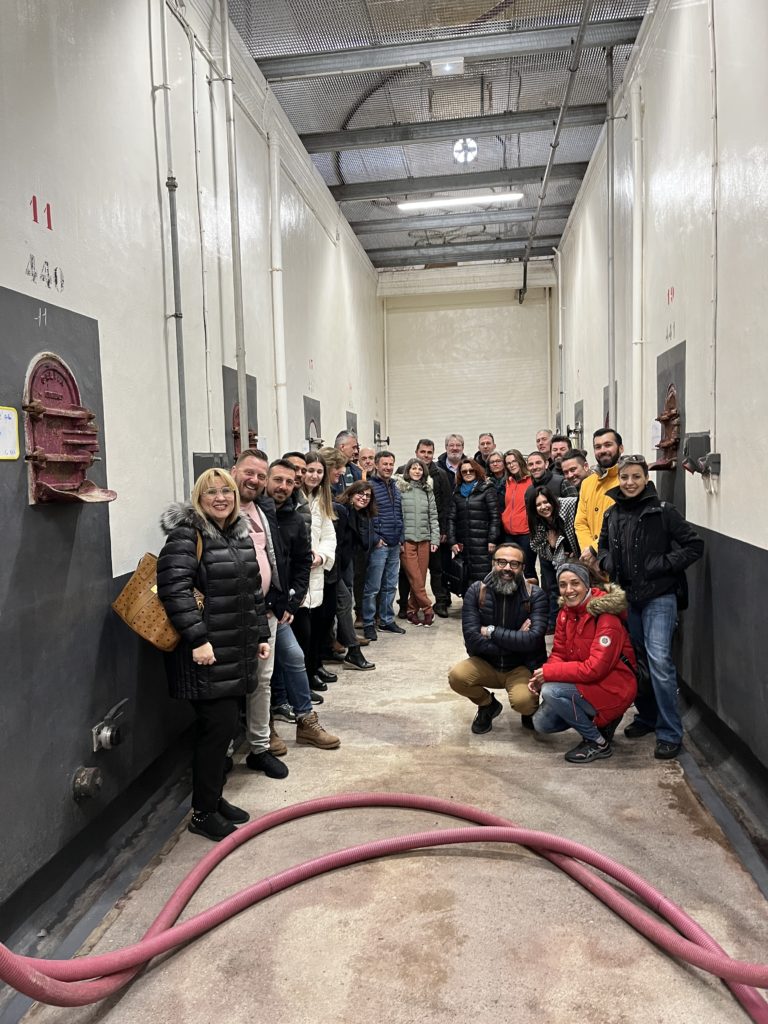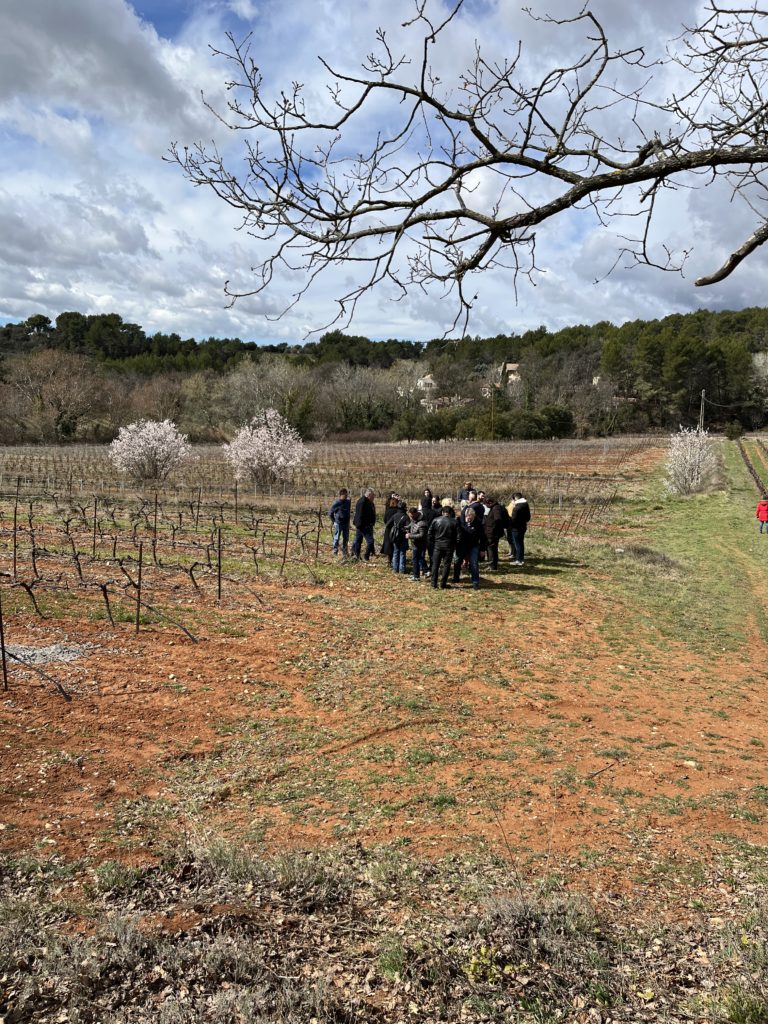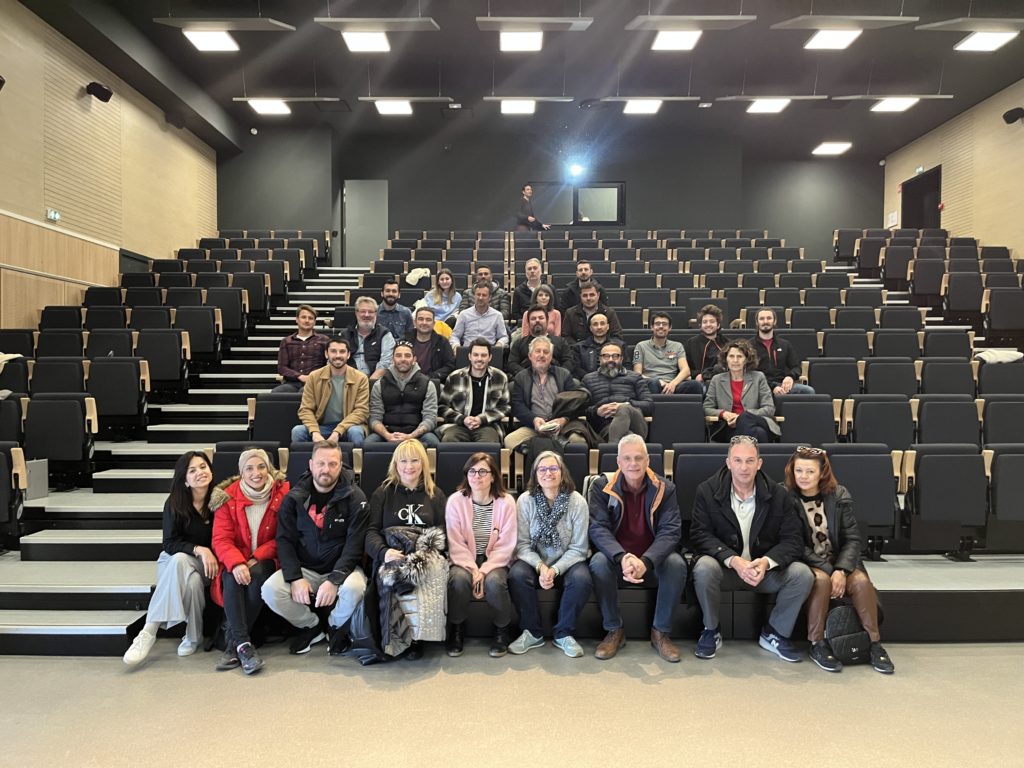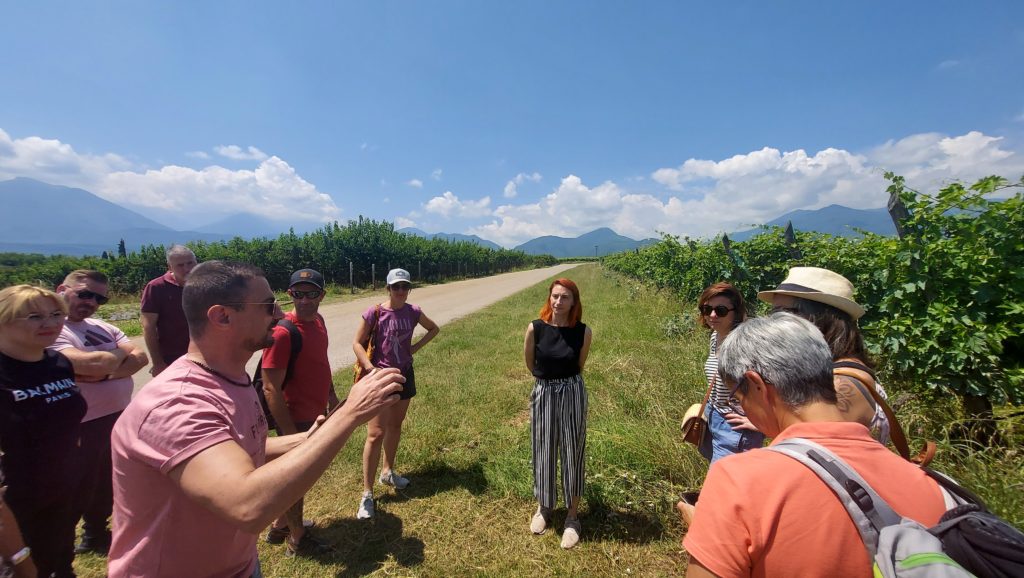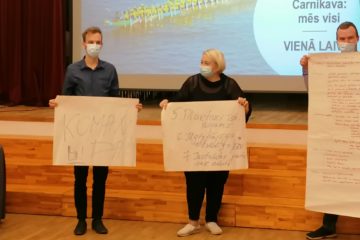Green Vinum: Sustainability Techniques and Energy Efficiency in the wine sector
Project n°17
INTRODUCTION
“Green Vinum” is a transnational cooperation project implemented by four Local Action Groups implementing programs of the European initiative CLLD/LEADER, in different regions of Europe. The goal of the transnational cooperation plan is to strengthen the competitiveness of small and medium-sized winemaking and distilling businesses through the pinpointing and promotion of good environmental practices in matters of energy savings, incoming raw materials, and wastes management during the production proceedings of small winemaking/distilling businesses. The process of production and maturation the wine sector faces significant issues in terms of waste and energy consumption that could be improved. A standardized environmental management process could offer every winery, depending on its size, the possibility of reducing waste production and energy demand from a more sustainable production process. In addition, the possible negative effects of climatic instabilities that create production problems could be avoided.
PRESENTATION
Sustainability, energy, and climate change are increasingly critical issues for the winemaking industry, as it faces the challenge of reducing its environmental impact while producing high quality wines. The winemaking industry is highly dependent on natural resources, including land, water, and energy, and is vulnerable to the impacts of climate change, such as extreme weather events and changes in grape growing conditions. To explore initiatives and strategic plans over sustainability, adaptation to climate change, and mitigating energy use, winemakers in France and Greece were involved in the “Green Vinum” project.In detail the following activities were implemented:
Activity 1: Coordination actions Each partner will dedicate a budget for the required coordination actions, where applicable. These actions are related to the administrative and financial planning and monitoring.
Activity 2: Recording of existing situation on the wineries sector
A.2.1 Recording via research There is already work done in the subjects of sustainable techniques (incl. Waste management), energy efficiency and resilience to climatic change. An external expert with the support of the involved LAGs scaned the existing bibliography in order to offer full reports on the three sectors.
A.2.2 Recording via questionnaires The questionnaires will be drafted by with questions regarding the environmental, sustainable, energy and legal dimensions of a winery’s operation. The process was organized by an external expert, including the process of drafting the questionnaire, distributing and receiving the questionnaires and analyzing the results. Scope was to record the major risks, the critical points of the production process, the energy data and the potential existing innovative or good practices, the problems recorded by the climatic changes.
Activity 3: Creation of Handbook on Proposed Techniques and Best Practices
A.3.1 Handbook on Proposed Techniques and Best Practices A Handbook on Proposed Techniques and Best Practices was be created with the support of an appointed external expert.
The contents of the Handbook is:
1. Summary of the questionnaires results
2. Results about bibliography references – summary)
3. Good practices organized in the 3 sectors: waste management/energy efficiency/climate resilience).
4. Conclusions
Activity 4: Networking, Training and Adaptation
A.4.1- Implementation of international workshops & study visits In each involved area a workshop was organized with the participation of local working groups members. In these workshops the results of activity 2 were also presented and, more importantly, open discussions with the individuals of the field took place, recording views/objections/comments/suggestions.
A.4.2 Sustainable Training and adaptation In each CLLD / LEADER area involved, training courses are organized in the local language, on the proposed techniques and best practices with the participation of experts involved in the project.
A.4.3 Adaptation of proposed techniques The involved wineries that have or are going to adapt sustainability techniques and best practices for sustainable development, will create an innovative network of “green wineries”, implementing specific actions, such as pilot actions for the use and re-use of waste.
Activity 5: communication actions
A.5.1 Network communication actions
A.5.2 Local communication actions
PRINCIPAL OBJECTIVES
The specific objectives are the following:
• Increase the capacity of territories to propose an integrated tourist offer, connected with local products and wine producers focused not only in wine but also in the bioclimatic method of production.
• Favour employment, job opportunities and the birth of new enterprises, multi-functionality, and diversification of the rural economy.
• Increase the quality of life in rural areas, the attractiveness of rural territories and services to cope with demographic, social and economic changes.
• Training and informing young entrepreneurs in the agri-food sector in the target areas.
• Increase knowledge and awareness on energy saving, energy self-sufficiency, waste reduction and its treatment.
• Networking companies, processes, methodologies, knowledge, and contacts.
• Learning about the impact of climate change on local viticulture.
The central axis of the Strategy is structured in the following General objectives:
• To support wineries about sustainability (incl. waste management), energy efficiency and resilience to climatic changes.
• To record and evaluate the existing situation on the wine industry.
• To offer the possibility of visits and exchanges to wine professionals and relevant experts.
• To create active local working groups for sustainable wine productions and to train these groups.
ADDED VALUES OF THE PROJECT
The GREEN VINUM partnership presents a complementary dimension, both LAGs and associations of winemakers or independent entrepreneurs, either as partners or as indirect beneficiaries, depending on the participating country operating framework. The main added value of the project is that it was well-tailored to the needs of the involved LAG areas, since it was focused on the most pressing needs of these areas. Moreover, it encompassed several fields, sustainability, comate change, energy efficiency, legal requirements. Furthermore, the project was innovative sine it is generated new processes to be adapted in the involved areas, based on the recording of existing innovative knowledge. Finally, the project promoted the links between actors, creating partnership that would not have existed without LEADER. GREEN VINUM reached fully the relevant beneficiaries of the involved LAG areas, either via direct involvement of wine makers association or via the leverage of the local entrepreneurship recorded. What was also important was that different geographical zones were reached, leading to high level and success exchange of knowledge. The Green Vinum project has been designed and implemented in order to meet all LEADER principles. In detail:
1. Bottom-up approach: the actual needs of local wine makers were recorded and LAGs have implemented the specific project to meet their needs.
2. Area-based approach: The areas involved small, homogenous, socially and functionally cohesive territories, characterised by common traditions, a local identity, a sense of belonging or common needs and expectations.
3. The local partnership: the people who were previously the passive ‘beneficiaries’ of a policy become active partners and drivers of their area’s development;
4. An integrated and multi-sectoral strategy: in all involved areas LAGs explored and addressed the needs and opportunities of the area in an integrated way to achieve the desired common goals.
5. Networking: In all areas the LAGs formed networks of local partners which through its strategy and activities promote links between local actors and others in the development chain.
6. Innovation: the project was innovative sine it is generated new processes to be adapted in the involved areas, based on the recording of existing innovative knowledge.
7. Cooperation: Cooperation via Green Vinum is not an end in itself, there was a clear purpose and benefit in working with others. Cooperation with other regions in the Green Vinum areas was an excellent source of innovation and knowledge transfer for local people and allowed rural areas to address and take advantage of their diversity introducing new perspectives and insights from other areas, importing and exporting successful approaches and good practices. In terms of sustainability, several initiatives have been adopted in the involved areas. Moreover, the sustainability of the project over time is proved by the need for best practices in the winemaking industry which is driven by a range of factors, including consumer demand for sustainable products, the need to comply with regulatory requirements, and the economic benefits of reducing costs through energy efficiency and waste reduction. Adopting best practices recorded in the Green Vimum handbooks and reports could also improve the industry’s resilience to climate change by promoting sustainable land use and reducing the risk of crop losses due to extreme weather events. These outputs could be used by any other area and, moreover, a Green Vinum 2 project has already been designed to implement in the next CLLD/Leader period. To address challenges, the winemaking industry via the “Green Vinum” had the opportunity to adopt best practices for sustainability and energy efficiency, adding value to the local enterprises, local economy and local strategy for different areas. However, a key challenge that French and Greek stakeholders in the winemaking industry encountered refers to the absence of a ‘protocol’ or ‘standard’ that sets out the process steps to implement and monitor sustainability initiatives. On the strategic horizon, ensuring higher safety and quality of wine, good working conditions and treatment of wastewater are high priority sustainability aspects for French and Greek wine producers. Overall, the winemaking industry with Green Vinum project took a proactive approach to sustainability, energy, and climate change in order to ensure its long-term viability and meet the demands of consumers and regulators. By adopting best practices, the industry can reduce its environmental impact, improve its economic performance, and ensure the continued production of high-quality wines for future generations.
